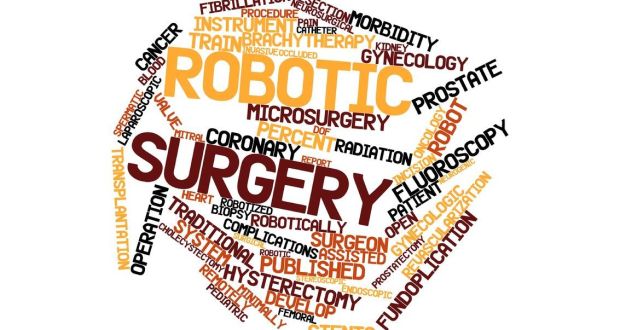The practice of surgery has certainly progressed over the last several decades. In fact, today many patients undergo operations with robotic technology. At first glance, it might seem as if such tools would make surgery more efficient and effective. But is this actually the case, or is robotic surgery more problematic than it’s worth?
Tools of the Trade
You’re probably wondering how robotic surgery actually works. The answer is fairly straightforward; in short, the surgeon operates on the patient with the aid of several mechanical arms. These appendages are equipped with various surgical instruments, and have joints that allow them to mimic the movements of a human wrist. The system also includes a camera arm and a computer console located just a few feet away from the patient.
This console is where the presiding surgeon conducts the procedure. It typically includes two hand and finger control devices, which effectively synchronize the movements of the robotic arms with surgeon’s hands. A 3D monitor displays the images captured by the system’s camera arm, providing a detailed perspective that clearly identifies nerves and muscle tissues adjacent to the surgery site. Of course, this is very useful to the surgeon, who must be mindful about accidentally injuring the patient during the operation.
Robotic surgery certainly offers some advantages over the methods used in minimally invasive procedures. The highly-flexible arms used by these systems are quite capable of making slight and precise movements during surgical operations. A number of surgeries would be far more difficult (if not impossible) to perform without the aid of this technology.
What Research Says
Given robotic surgery’s sharp rise in popularity over the last decade, it’s not surprising that multiple studies have examined the effectiveness of procedures that utilize such machines. A recent example of such research comes from Columbia University Medical Center (CMUC), which released a report detailing the costs and complications related to certain robot-assisted operations.
This study focused on how women fared after receiving two gynecologic surgeries, known as oophorectomies and cystectomies. The first procedure involves removing one or both of the patient’s ovaries, while the second is used to extract fluid-filled sacs called cysts from these same organs. The researchers compared the complications rate of patients who received minimally invasive surgery against those who underwent robot-assisted operations.
Data for this study was collected from more than 500 hospitals across the United States. In all, the authors studied over 87,500 women who underwent surgery for non-cancerous gynecologic conditions. All of these procedures occurred between 2009 and 2012, and could be categorized as either laparoscopic (minimally invasive) or robot-assisted.
Using this information, the authors determined that robotic surgery carried more of a risk for intraoperative complications, or complications that occur during surgical procedures. Among oophorectomy patients, 2.1% of women who were treated with laparoscopic techniques suffered such problems. For robot-assisted oophorectomies, the intraoperative complication rate stood at 3.4%. The same gap was observed for cystectomies; 0.9% of patients in the non-invasive group were injured while under the knife, compared with 2.0% of those who had robotic surgery.
Adding insult to injury, the CMCU report further noted that robot-assisted surgery also carried a higher price tag. When performed with the help of robotic technology, oophorectomies and cystectomies had respective median total costs of $7,426 and $7,444. In comparison, a minimally invasive oophorectomy had a median total cost of $4,922, while this figure came in at $4,133 for laparoscopic cystectomies.
A Second Look
The news is not all bad for robotic surgeries. In December 2014, researchers from University of California, Los Angeles announced that they had used this technology to operate on previously inaccessible regions of the body. For this study, this authors aimed to improve upon a robotic procedure known as Trans Oral Robotic Surgery (TORS). TORS relies on mechanical arms and a 3D camera to remove tumors from areas that are difficult for surgeons to reach by other means. Doctors use this approach to treat patients with cancerous tumors on the base of the tongue, throat and tonsils.
In a breakthrough operation, the UCLA researchers modified the TORS system in order to access a tumor lodged in the throat of a volunteer. The tumor had been found in the patient’s parapharyngeal space, a region located towards the base of the skull. Since this area is surrounded by numerous muscles, blood vessels and nerves, removing parapharyngeal tumors requires the use of highly invasive techniques; the options available to surgeons are to either cut through the neck, or to split the patient’s jaw bone. In a fair amount of cases, operating in this part of the body is not a realistic possibility, and the tumor cannot be removed.
After refining and improving the surgical techniques used in TORS procedures, the researchers were able to perform a successful operation in the subject’s parapharyngeal space. According to a UCLA press release, the patient is now “cancer free” following the procedure. This new method for removing tumors was developed by lead author Abie Mendelsohn, who also operated on the patient. “This is a revolutionary new approach that uses highly advanced technology to reach the deepest areas of the head and neck,” stated Mendelsohn. “Patients can now be treated in a manner equivalent to that of a straightforward dental procedure and go back to leading normal, healthy lives in a matter of days with few or even no side effects.”
The impact of robotic surgery appears to be a fairly complex issue, one that researchers will continue to study with great interest. Further research, along with additional advances in medical technology, will hopefully provide a clearer picture regarding the role of robot-assisted procedures.
 Natural Knowledge 24/7 Educate yourself with nutrition, health and fitness knowledge.
Natural Knowledge 24/7 Educate yourself with nutrition, health and fitness knowledge.






